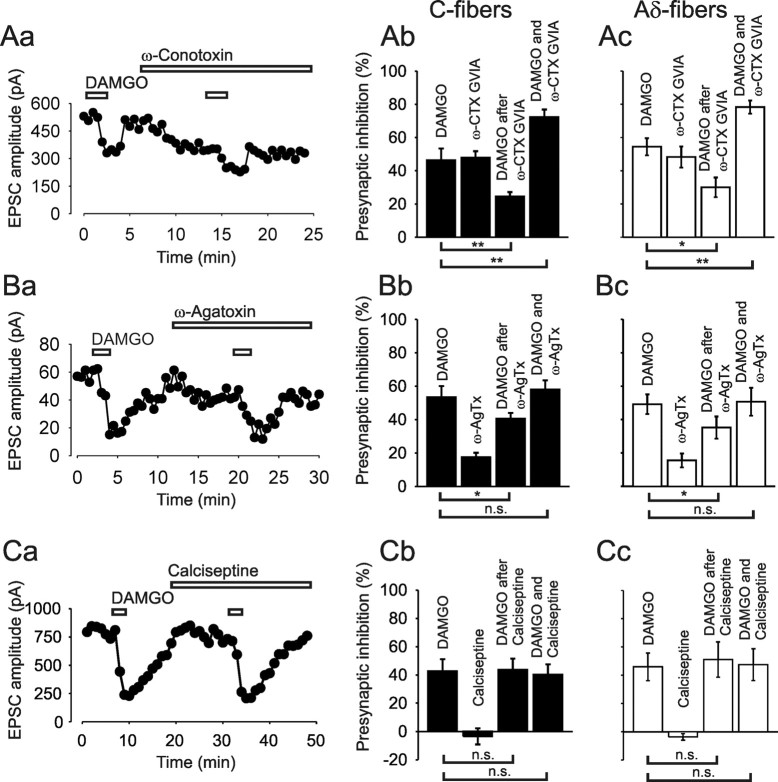Figure 2.
Blockers of VDCCs reduced the inhibitory effect of MOR agonist DAMGO on monosynaptic C- and Aδ-fiber-evoked EPSCs, respectively. A, Representative time course of EPSC amplitudes (Aa) and corresponding bar graph (black bars, Ab) demonstrating the reduced inhibition of C-fiber-evoked EPSCs by DAMGO (100 nm) in the presence of the N-type-specific VDCC blocker ω-conotoxin GVIA (ω-CTX GVIA, 1 μm; n = 7). Ac, Bar graph (white bars) summarizes the effect of ω-CTX GVIA on the inhibition of Aδ-fiber-evoked EPSCs by 250 nm DAMGO (n = 8). B, Typical recording of EPSC amplitudes (Ba) and corresponding bar graph (black bars, Bb) showing the reduced inhibition of C-fiber-evoked EPSCs by 100 nm DAMGO in the presence of the P/Q-type-specific VDCC blocker ω-agatoxin (ω-AgTx, 300 nm; n = 5). Bc, Bar graph (white bars) summarizes the effect of ω-AgTx on the inhibition of Aδ-fiber-evoked EPSCs by 250 nm DAMGO (n = 6). C, Time course of EPSC amplitudes (Ca) and corresponding bar graph (black bars, Cb) demonstrating that the L-type-specific VDCC blocking toxin calciseptine (0.5 μm) has no effect on the inhibition of C-fiber-evoked EPSCs by 100 nm DAMGO (n = 5). Cc, Bar graph (white bars) shows the effect of calciseptine on the inhibition of Aδ-fiber-evoked EPSCs by 250 nm DAMGO (n = 5). *p < 0.05; **p < 0.01; n.s., not significant.

